Benefits of space exploration
At the end of the Cold War and the space race, a new rationale was made on the pragmatic use of space for improving life on Earth,[1] with notable utilities such as satellite telecommunications, remote sensing, microgravity research and satellite navigation. Government, space programs began investing in practical outcomes for the public good. Therefore, the importance of measuring the socio-economic benefits of space activities steadily grew throughout the 1970s and 1980s, an era defined as "Mission to Planet Earth".[1] These benefits continue into today's society as the privatization of space travel and space exploration continues to show scientific and socio-economic benefits to those around them.
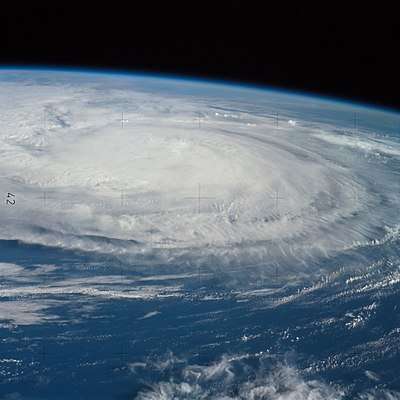
Direct benefits
Space programs that have made their way into a myriad of applications. The benefits of these applications are directly to the original investments made by the space agencies and the private sector.[1] Space exploration alone has provided a significant amount of knowledge that is important for the education of people about finally understanding of our planet and the universe.[2] Some of the more direct benefits of space exploration include an increase in the knowledge that is out there about space and the discovery of distant planets and galaxies, it also gives us insight into the beginnings of our universe.
Knowledge of space
Since Sputnik 1 entered orbit in 1957 to perform Ionospheric experiments, the human understanding of earth and space has increased.[3] The list of missions to the moon begin as early as 1958 and continued into the current age. A few successful lunar missions, by the USSR, include missions such as, the Luna 1 spacecraft that completed the first flyby of the moon in 1959, the Luna 3 lunar probe that took the first pictures of the far side of the moon in 1959, the Luna 10 orbiter that was the first orbiter of the moon in 1966, and the Lunokhod 1 lunar rover in 1970, which was the first rover that explored the surface of a world beyond earth. The United States also added significant lunar first, such as Apollo 8 in 1968 is the first successful human mission to orbit the moon and the historic Apollo 11 when man first landed on the moon.[4] Missions to the moon have collected samples of lunar materials and there are now multiple satellites such as ARTEMIS P1 that currently orbit the moon and collect data.[4]
Telescopic satellites have captured millions of images of the universe since the introduction of satellites, such as the Mariner Space Satellites. The Mariner 4 space satellite in 1965 was the first successful satellite to capture up-close images of the planet Mars. Mariner missions 6 and 7 additionally mapped the poles of the Red planet and relayed further images of the surface. By the end of the Mariner missions in 1972, Mariner 9 spent almost a year in the Martian orbit (687 days), collected images of nearly 100% of the surface of the moon, and observed notable discoveries including the humongous Olympus Mons volcano, more than 4000 km of Valles Marineris, and dust storms lasting over a month.[5] Further missions since 1972, like the Viking project, Mars observer, Mars pathfinder, Mars climate orbiter, Deep Space 2, Mars Global surveyor, and Phoenix, have obtained understandings of the climate, flood plains, and rock samples on Mars.[5]
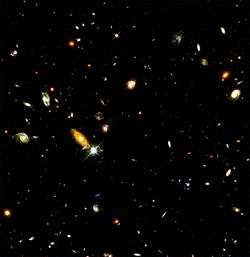
The Hubble Space Telescope has contributed more than 2 million observations of the universe that have been influential in understanding the magnitude of the universe since its introduction into orbit.[6] The intense focus of Hubble is for observation. The Hubble has been used to discover galaxies and planets across the universe. It was pointed at a speck of black space for ten consecutive days and the resultant image, the Hubble Deep Field, revealed at least 1,500 galaxies in that small location in the sky. Views like this allow the realization of the size and scope of the larger universal understanding of the types and variances of galaxies out in space. The Hubble Space Telescope has cost about $12 billion in the last 30 years including the cost of five shuttle servicing missions, the information received by the astronomers monitoring the Hubble provides a better understanding that would not be possible on from earth telescopes.[1]
Indirect benefits
Culture and inspiration
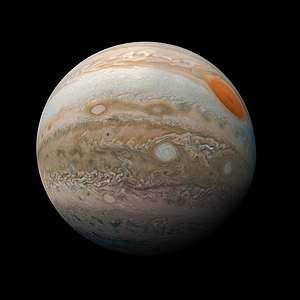
Human culture exists as a social environment made up by traditions, norms, rules written or unwritten, and social practices. Cultures can be specific to groups of any size such as a family or group of friends but also as large as a state or nation. The range and diversity of human culture is markedly large. International collaboration in the space age brought together different cultures and as a result, the exchange and advancement of human culture. In over fifty years of space travel, the diversity of those working in space and in the field as a whole has dramatically increased from the beginnings of space exploration. This progression in diversity brought more cultures into close quarters and resulted in the enrichment of human culture globally.[7]
A testament to space exploration facilitating cross-cultural growth, the International Space Station exhibits an important collaboration between nations to construct and continually man the station. The ISS operates as a research facility that contributes cutting edge scientific work from a unique environment that is nearly impossible to recreate on earth.
The innovation and exploration of the space age has served as an inspiration to humankind. Breaking through into space travel, man leaving earth and defeating gravity, taking steps on the moon, and various other achievements were pivotal moments in human cultural development. In particular, the scientific and technological advancements stand as an inspiration to the scientific community of students, teachers, and researchers worldwide. Moreover, space exploration has also inspired innovative training programs aimed at preschoolers, such as the Future Astronauts Program. It is evident that by drawing in the wonder of space together with the knowledge and skills developed through space exploration into classrooms, children can be strongly motivated and empowered from a young age.[8]
Space exploration has nearly no limit to how far humankind can adventure as our technology advances. Space exploration will continue to foster international inspiration and collaboration, and pose revolutionary philosophical, political, and scientific questions and debates.[9]
Global partnerships
The International Space Station (ISS) is a space station assembled in low earth orbit largely by the United States and Russia, with assistance and components from a multinational consortium. In 1993, the United States and Russia agreed to merge their separate space station plans into a single facility integrating their respective modules and incorporating contributions from the European Space Agency and Japan.[10] Collaborations among the international community have provided the ability to test things in space and see how objects and people react to space for extended periods of time. Work on the sustainability of long term space flights and the possibilities of interplanetary spaceflights have been major objectives of the ISS.
These partnerships benefit all nations, even those outside the industrialized world. Some African countries, including Nigeria and South Africa, have successfully employed space technology—specifically satellite-based disaster management, climate monitoring, and green systems—to tackle workforce development issues and launch new space activities.[11]
Space is a place where different religions can come together. Evangelical Christians are the least knowledgeable and supportive of space travel, while Eastern religions are the most knowledgeable and supportive. Studies show that Evangelical Christians and Eastern Religions are both equally as optimistic about space. Even though these two religions are different, they both come together in their optimism about space.[12]
Spinoffs
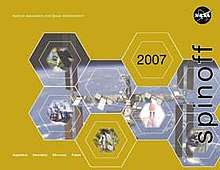
NASA reports that 444,000 lives have been saved, 14,000 jobs have been created, 5 billion dollars in revenue has been generated, and there has been 6.2 billion dollars in cost reduction due to spin-off programs from NASA research in collaboration with various companies.[13] Of the many beneficial NASA spinoff technologies there has been advancements in the fields of health and medicine, transportation, public safety, consumer goods, energy and environment, information technology, and industrial productivity.[13] Multiple products and innovations used in the daily life are results of space generated research.[9] Solar panels, water-purification systems, dietary formulas and supplements, space suit materials in clothing, and global search and rescue systems are but a few examples of the beneficiary spinoffs that have been produced.[13][14]
International Space Station
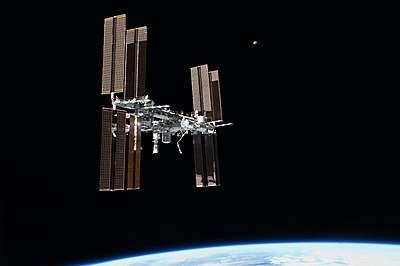
The unifying efforts to create the International Space Station took form in December of 1998 as the space shuttle Endeavor launched from the Kennedy Space Center.[15] Collectively, 18 nations took some part in the development and construction of space station and the five notable agencies that encompassed these 18 nations were NASA, Roscosmos, the European Space Agency, the Canadian Space agency and the National Space Development Agency of Japan.[15] The International Space Station serves as a depot of collaboration across the world for innovative research, human health research, global education and earth observation. The International Space Station itself contains complex sensors including light detection and ranging systems which help in our understanding of sea surface winds and atmospheric transportation patterns.[16] Additional astronaut observation from the station with powerful cameras provides detailed images of the earth and panoramic views of the atmosphere of the earth.[17]
Data collected from the space station complex orbital sensor system have been a valuable tool in evaluating the extent of damage resulting from natural disaster. Real-time mapping coupled with a human crew allows for space to ground collaboration.[17]
Communications
The first passive communication satellite was actually a balloon called Echo 1 inflated in orbit. It was launched on August 12, 1960, and stayed roughly 1000 miles (1,600 km) above the Earth until May 24, 1968.[18] The first satellite that would be an actual communication satellite by modern standards was launched on July 10, 1962, and it was named Telstar. It allowed communication between the United States and Europe to occur almost instantaneously.[19] Telstar operated for approximately a year before it shut down, but even with its rather short lifespan, it proved that long distance communication by satellite was possible. Now, far more sophisticated communications satellites can be used to communicate in remote areas with the use of satellite phones, to provide internet service on airline flights, and provide internet to areas that are unable to get internet in any other way.[20] The number of communication satellites has since expanded to about 2,000 which are able to provide continuous communication around the globe.[21]
Weather satellites
The first weather satellite named TIROS I (Television and Infrared Observation Satellite) was launched on April 1, 1960.[22] The satellite used television cameras to take pictures of clouds as it orbited the Earth. TIROS I only operated for 78 days, however during that time it was able to prove that using a satellite to observe weather conditions on Earth was not only possible, but that it could greatly increase the amount of data available to meteorologists with the result was that more accurate weather forecasts were possible.[23] The use of satellites has since come a long way. The number of weather satellites has increased significantly, and the satellites themselves are now more sophisticated. In addition to taking pictures of clouds they can now observe weather patterns in the same area 24/7 because they are in geostationary orbit, meaning that they move at the same speed as the Earth's rotation and thus they always see the same area. Even when it is dark in the part of the world that they are observing they can see through the use of infrared technology. This allows meteorologists to monitor the development of weather in areas that are not covered by traditional means like Doppler radar, such as over the ocean, which, in turn, allows them to give advanced warnings for severe weather such as hurricanes thus saving lives. Weather satellites can also be used to observe the amount of ice at the poles, and where that ice may go if it breaks off. Also, the satellites are used to take pictures of the snow coverage in an area which can help determine the amount of water that will run off when the snow eventually melts.[24] They are even being used to predict the amount of power that solar panels can make in certain areas by monitoring the cloud cover and weather patterns at the proposed solar panel site.[25]
Biomedical research

Beginning in 1967, NASA successfully began its Biosatellite program that initially took frog eggs, amoeba, bacteria, plants and mice and studied the effects of zero gravity on these biological life forms.[26] Studies of human life in space have augmented the understanding of the effects of adjusting to a space environment, such as alterations in body fluids, negative influences on the immune system and effects of space on sleep patterns.[27] Current space research pursuits are divided into the subjects of Space Biology, which studies the effects of space on smaller organisms such as cells, Space Physiology, which is the study of the effects of space on the human body and Space Medicine, which examines the possible dangers of space on the human body.[27] Discoveries concerning the human body and space, particularly the effects on the development of bones, may provide further understanding of biomineralization and the process of gene transcription.[28]
See also
References
- Gurtuna, Ozgur (2013). Fundamentals of Space Business and Economics. SpringerBriefs in Space Development. Springer New York Heidelberg Dordrecht London: Springer. p. 31. doi:10.1007/978-1-4614-6696-3. ISBN 978-1-4614-6695-6.
- Mari, Christopher (2011). U.S. National Debate Topic 2011-2012 American Space Exploration and Development. New York and Dublin: The H.W. Wilson Company. pp. 76–77.
- Kuznetsov, Sinelnikov, and Alpert (June 2015). "Yakov Alpert: Sputnik-1 and the first satellite ionospheric experiment". Advances in Space Research. 55 (12): 2833–839. Bibcode:2015AdSpR..55.2833K. doi:10.1016/j.asr.2015.02.033.CS1 maint: multiple names: authors list (link)
- "Moon: NASA Science: Missions". Moon: NASA Science. Retrieved 2018-04-17.
- Greicius, Tony (2015-03-13). "Mars Exploration Past Missions". NASA. Retrieved 2018-04-09.
- NASA (October 19, 2017). "Hubble Discoveries". Retrieved 8 April 2018.
- Harris, Philip R. (1986-01-01). "The influence of culture on space developments". Behavioral Science. 31 (1): 12–28. doi:10.1002/bs.3830310103. hdl:2060/19930007674. ISSN 1099-1743.
- Sanders, Claire (10 July 2018). "Every Child Should Train Like A Future Astronaut. This Is Why". Fun Academy. Retrieved 30 July 2018.
- Benefits Stemming from Space Exploration (PDF). ISECG. 2013.
- Harland, David (16 January 2018). "International Space Station (ISS)". Retrieved 9 April 2018.
- MacLeish, Marlene Y.; Akinyede, Joseph O.; Goswami, Nandu; Thomson, William A. (2012-11-01). "Global partnerships: Expanding the frontiers of space exploration education". Acta Astronautica. 80: 190–196. Bibcode:2012AcAau..80..190M. doi:10.1016/j.actaastro.2012.05.034. ISSN 0094-5765.
- Ambrosius, Joshua D. (2015-05-01). "Separation of church and space: Religious influences on public support for U.S. space exploration policy". Space Policy. 32: 17–31. doi:10.1016/j.spacepol.2015.02.003. ISSN 0265-9646.
- NASA. Spinoff. 2012, https://spinoff.nasa.gov/Spinoff2012/pdf/Spinoff2012.pdf.
- ISECG (September 2013). "Benefits Stemming from Space Exploration" (PDF).
- LINCOLN; LONDON (2017). Outposts on the Frontier: A Fifty-Year History of Space Stations. UNP - Nebraska. pp. 343–344.
- Rainey, Kristine (2015-03-10). "ISS Benefits for Humanity". NASA. Retrieved 2018-04-10.
- Rainey, Kristine (2015-12-02). "Earth Observation and Disaster Response". NASA. Retrieved 2018-04-10.
- "1st Communication Satellite: A Giant Space Balloon 50 Years Ago". Space.com. Retrieved 2018-04-10.
- Stromberg, Joseph. "Fifty Years Ago Today, the First Communications Satellite Was Launched Into Space". Smithsonian. Retrieved 2018-04-10.
- Whitwam, Ryan (March 1, 2016). "Connecting Remote Areas To the Internet-By Satellite". PC Magazine.
- "Satellite communication". Encyclopedia Britannica. Retrieved 2018-04-12.
- "NOAASIS - NOAA Satellite Information System for NOAA Meteorological / Weather Satellites". noaasis.noaa.gov. Archived from the original on 2018-06-12. Retrieved 2018-04-10.
- Administrator, NASA Content (2015-04-20). "TIROS, the Nation's First Weather Satellite". NASA. Retrieved 2018-04-10.
- "NOAA Satellite Information System (NOAASIS)". noaasis.noaa.gov. Archived from the original on 2018-08-25. Retrieved 2018-04-12.
- Pierro, Marco; De Felice, Matteo; Maggioni, Enrico; Moser, David; Perotto, Alessandro; Spada, Francesco; Cornaro, Cristina (December 2017). "Data-driven upscaling methods for regional photovoltaic power estimation and forecast using satellite and numerical weather prediction data". Solar Energy. 158: 1026–1038. Bibcode:2017SoEn..158.1026P. doi:10.1016/j.solener.2017.09.068.
- "NASA - 50 Years of NASA History". www.nasa.gov. Retrieved 2018-04-10.
- Clément, Gilles (2006). Fundamentals of Space Biology: Research on Cells, Animals, and Plants in Space. New York: NY: Springer New York.
- Clément, Gilles (2005). "Fundamentals of Space Medicine". The Space Technology Library. 17: 3.